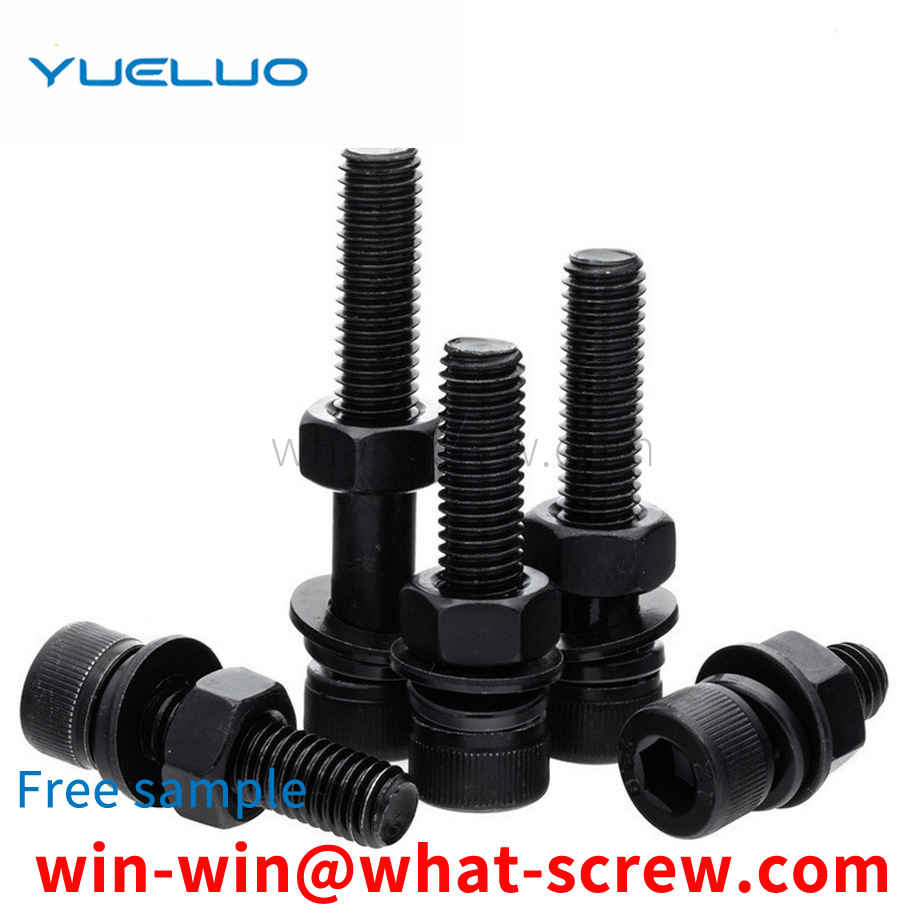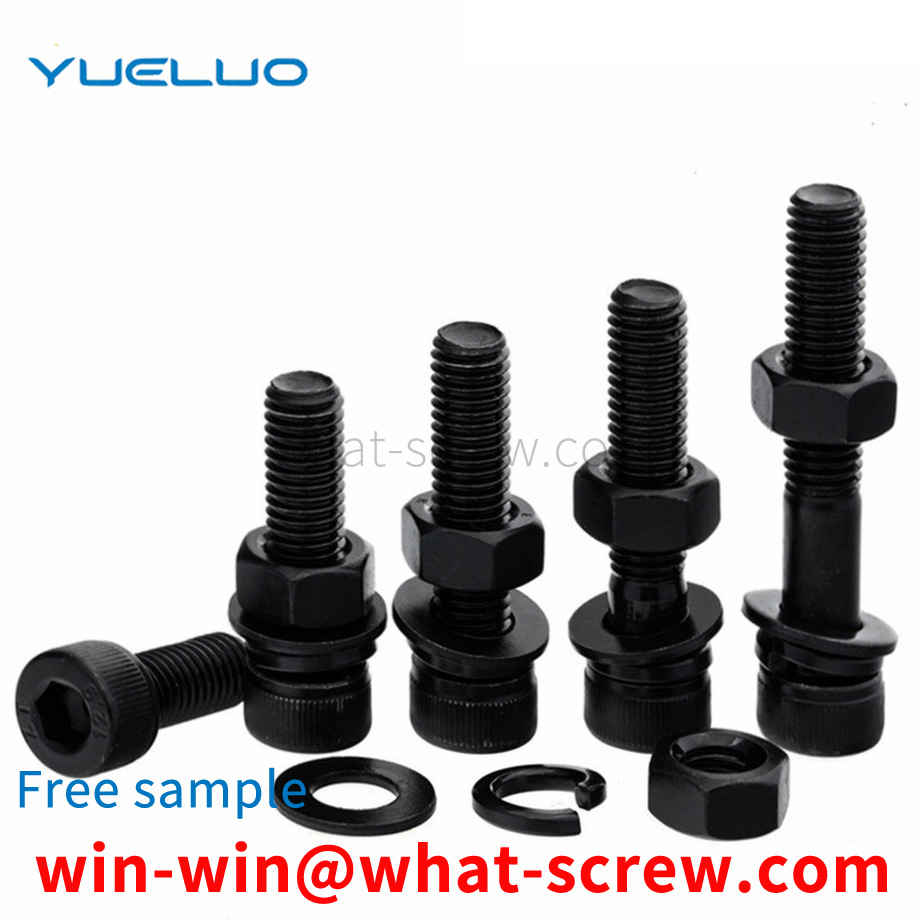There are two typical pin shearing fixture tooling, among which the traditional fixture shown in Fig. 1 is more complicated and consists of fixture, spacer, washer and shearing block guide post, hardened bushing, shearing block and so on. The cylindrical pin is installed in the hardened bushing, and the axial load is applied through the shear block to complete the shear test. The fixture is complicated in manufacture and has many consumables, because the size of the hardened bushing is similar to that of the cylindrical pin. , and to keep the notch of the cylindrical pin upward, it is difficult to install before the test, and the broken cylindrical pin after the test remains in the hardened bushing and is difficult to remove.
Countersunk head screws are mostly used after installation, and the surface of the parts cannot be raised, and the parts to be fastened have two thicknesses. Thickness, after the screw is tightened, there is still a part of the screw thread that does not enter the threaded hole. In this case, the countersunk head screw can definitely be tightened. There is usually a situation where the thickness of the fastened part is less than the height of the head of the countersunk head screw, which is commonly seen in sheet metal parts in mechanical equipment, such as the connection between the hinge of the chassis and the door and the box; the sheet metal of the equipment The connection of the cover to the equipment, etc. Due to the small thickness of the part, the tightened sheet metal part, the screw through hole completely becomes a conical hole, in this case, when the countersunk head screw is tightened, the screw head is not a tapered surface to press the sheet metal part , but the bottom of the screw head and the top of the threaded hole are squeezed. Although it feels that the screw is tightened, the sheet metal part is stuck instead of being pressed. In this case, although it feels that the screw is tightened, the sheet metal The gold pieces were indeed not tightened. This is a very common situation. Let’s talk about the reasons for the processing: the head cone of the countersunk screw has a 90° conical angle, and the apex angle of the newly bought drill is usually 118°-120°. Some workers who lack training do not know this angle is poor. It is often used to ream the hole with a 120° drill bit, which results in that when the countersunk head screw is tightened, it is not the conical surface of the head, but a line at the bottom of the screw head, which is one of the reasons why the so-called countersunk head screw cannot be tightened. , it's not the screw's fault.
Traditional rivets have a single purpose and need to be used in combination in most occasions. The operation is complicated, labor-intensive, and the connection quality cannot be guaranteed. Therefore, there is a need for an integrated rivet.
Referring to Figure 1, one end of the existing insert nut 1' is embedded in the injection molded part 2', and the other end is exposed to the injection molded part 2'. The insert nut 1' has opposite lower and upper end surfaces in the axial direction. The end face of one end of the insert injection molded part 2' is the lower end face. In order to reduce the resistance during hot pressing, the connection between the inner wall surface and the lower end surface of the insert nut 1 ′ is provided with an inclined surface. However, when the embedded nut 1' of this structure is hot-pressed, the hot melted glue will generate a shunt that rises along the slope, and then a convex peak is formed in the screw hole of the embedded nut 1', and the convex peak occupies the screw. The space in the hole prevents the screw 5' from being completely screwed in; at the same time, due to the shunting of the hot solder, the knurling of the inner nut 1' near the upper end face cannot be filled with the solder, which makes the inner nut 1' and the inner nut 1' and The injection part 2' is not firmly embedded. Therefore, the locking strength of the existing insert nut 1 ′ and the screw 5 ′ after being hot-pressed is relatively low.
Screws and nuts, as the most commonly used fastening devices, have the defect that they may loosen and fall off, especially those in a long-term vibrating environment are more likely to loosen and fall off. Additional anti-off parts such as anti-off washers and anti-off caps are added, so that an extra anti-off part is used in the fastening process, and these anti-off parts are sometimes difficult to find when they are not always needed and are inconvenient to use.
We have many years of experience in the production and sales of screws, nuts, flat washers, etc. The main products are: aluminum alloy tightening handle screw nuts, flange non-slip nuts, three-combination screws and screws, slotted round nuts and nuts and other products, we can provide You have the right fastener solution for you.



















 Service Hotline
Service Hotline




